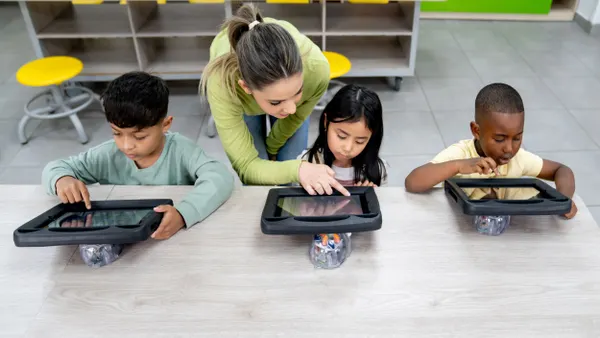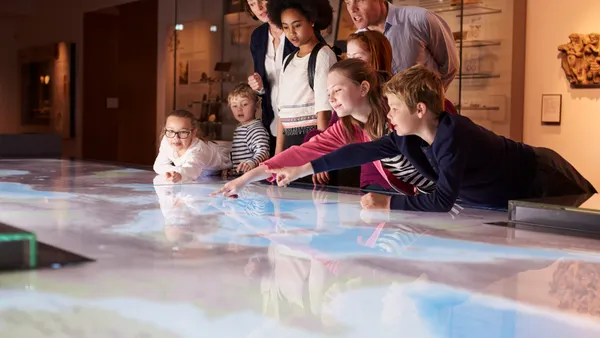Dive Brief:
- Mike Washburn teaches computer design to middle school students, including one 8th-grader who created a jump scare game so frightening that Scratch banned it from the site, as he detailed for EdSurge.
- Washburn turned to game design to try and bridge the motivation students feel at home while they play video games to the work they feel they must complete at school, with the solution being “to turn students from consumers to creators.”
- Students spent an entire year working on a game design challenge, or GDC, earning grades for their assignments while producing an alpha version of their game to get feedback before moving forward. Ultimately, students drive the entire experience, learning how to manage their work, themselves and their learning.
Dive Insight:
Curriculum designers looking to liven up classroom learning should consider stitching real-world experiences into lessons. Lecturing students delivers information, but giving them an opportunity to put that information into practice is where real learning often takes place.
Experiential learning is at the crux of this, bringing relevance to basic lessons — whether that’s students writing a play of their own in English class and learning how to structure drama, or coding their own game in a computer science class. Any subject can benefit from experiential learning and is often the better for it,with examples including a middle school designing a tween space in a public library as part of its STEM curriculum.
Creating these opportunities can be time consuming. Administrators, however, have options right outside their classrooms. Local businesses, organizations and other community groups are often eager to connect schools with professionals who can talk about their own work experiences, while also lending a hand in sponsoring a project, as well.











